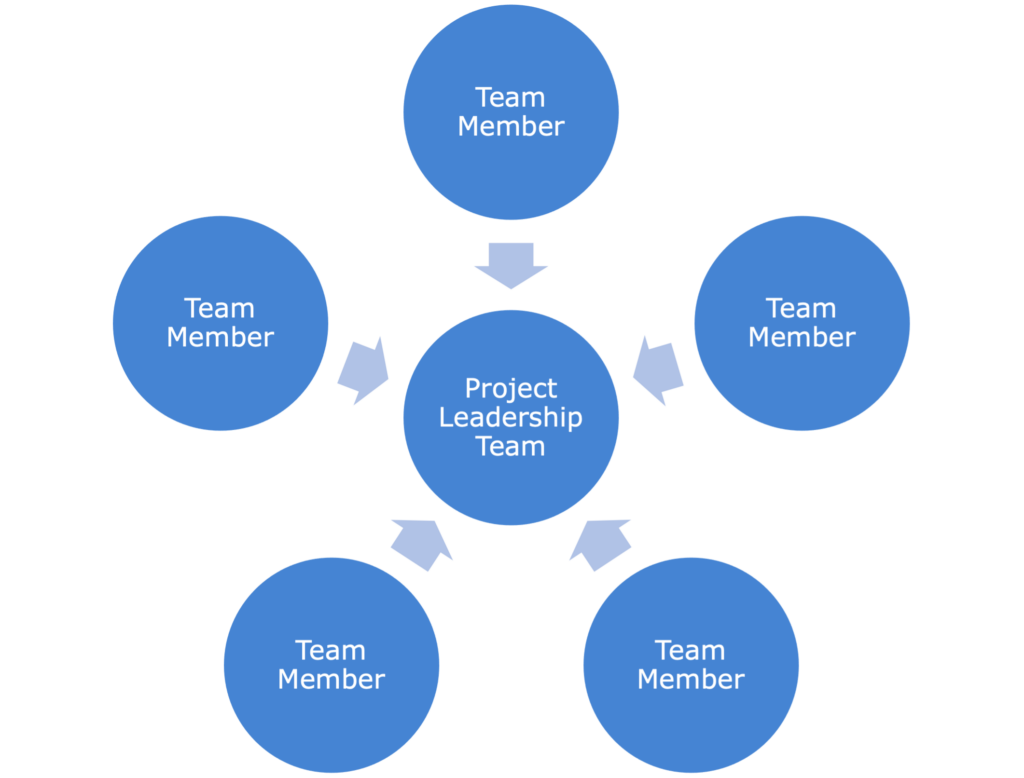Preparing Co-Workers to Lead Volunteers Online & On Land
Many nonprofit staff are unprepared, and therefore reluctant, to assume the responsibility to lead volunteers.
They are often resistant to engaging volunteers in their departments and, even when they do, it’s not always smooth sailing.
But you understand what they don’t – that your volunteer corps is a significant asset to your organization, not a nuisance.
Volunteers increase your organization’s community profile and reach, they enhance your credibility, and they help you build and sustain the capacity to deliver needed services.
So, it’s important develop a strategy that will provide this valuable group the kind of attention and caring they deserve.
To develop five-star support for volunteers, it will take a team approach. And you can do something about that.
Volunteer services staff cannot do it alone. they must work with peers in other departments to ensure that volunteers enjoy a safe and supportive working environment.
So, it’s vital that anyone who will be working with volunteers has the training they need to be successful.
In addition, the more confident your co-workers feel about their capacity to lead volunteers, the more likely they will be open to welcoming more volunteer support into their departments and programs.
But what do you include in your training? What’s most important for them to know to be successful?
How to Train Staff to Lead Volunteers
When preparing your training, remember that as a volunteer services professional, it is your job to help your organization leverage and lead volunteers in the most effective way.
This means that everyone who supervises volunteers needs training, whether they admit it or are open to it, or not.
While you may have a few squeaky wheels, most employees and volunteer leaders will both appreciate and benefit from the time you invest offering guidance on how to work effectively with volunteer team members.
In addition, training is often a two-way street and can unearth hidden treasures.
Well-trained people in your own organization are not only wonderful supports for volunteers can be great resources — they can also provide advice, support, technical assistance and free word-of-mouth advertising for the volunteer program.
So, take the time to both educate and build bridges to support your volunteer’s good works.
Ask your co-workers to reflect on their own experiences as volunteers, ask for their input on future training topics around leading volunteers, and get them involved in sharing their stories, where possible.
The more they feel consulted and involved, the less resistance and more engaged they will be.
In terms of training staff to lead volunteers, the following items are helpful to cover:
- Appreciation for Their Support — Agency staff are often “invisible” helpers to volunteer programs in the ways they greet volunteers, help them locate supplies, and navigate around the building. Take this rare opportunity to thank your colleagues for being part of the team.
- Volunteer Impact — Because the rewards of volunteer involvement are not always obvious to all, it helps to share the recent accomplishments of volunteers as they relate to the agency’s goals and objectives. It’s also helpful to show your data sources (e.g., volunteer time logs) and why they are important to tracking your outcomes. That way, they can also reinforce any reporting requirements for volunteers.
- Program Standards — Paid staff should be briefed about the volunteer program’s policies and procedures, so they are offering consistent direction and guidance and have a working knowledge of how volunteers are recruited and inducted into the organization. They will be surprised at how much work goes into the program and are then more likely to actively support your volunteer retention efforts.
- Volunteer Supervision and Motivation Tips — Volunteer supervision must be more a partnership than a top-down relationship, so it helps to make staff aware of the difference as well as share information about what motivates volunteers and provide tips on how to successfully work together.
- Volunteer Roles — If the staff will be working with volunteers directly, they also need to understand the volunteer positions inside and out and any associated risk management strategies specific to the positions they supervise. Also, to reduce staff anxiety, delineate the differences between paid and volunteer work.
- Volunteer Recognition — Staff need to be made aware of, up front, any formal recognition or reward activities they will be expected to participate in and be encouraged to make informal recognition a frequent part of their activities with volunteers.
- Program Evaluation — Finally, if volunteers will have an opportunity to assess and comment on their experiences, staff should be made aware that this will occur and when, as well as any other program evaluation activities. Also, if employee supervisors will be evaluated (e.g., through responses on volunteer surveys), then get them involved in drafting the questions to gather the kinds of feedback that would be most helpful to them in their supervisory role.
For more on supervisory skills, check out Chapter 5: Volunteer Supervision of our Essential Guide to Managing Volunteers at Your Nonprofit HERE >>
Helping Staff Adjust their Leadership Styles & Approaches
While a traditional, hierarchical style of management (sometimes called “command-and-control”) works for some situations (e.g., emergency response efforts) and is required in some contexts (e.g., historically bureaucratic institutions), it is rarely helpful in inspiring and motivating volunteers.
In general, today’s volunteers want to participate and have a say in what they accomplish and how they go about it.
So, alternate approaches, therefore, are helpful to consider when planning how to lead volunteers.
One helpful model is that of participatory leadership and decision-making. The traditional industry leadership model is a triangle with a charismatic leader at the apex.
Traditional Management Model
However, a more innovative, and perhaps more effective, leadership model involves a network of people around a circle who filter information from the perimeter and feed it into the middle of the organization for action.
This kind of participatory leadership model assumes that the group has greater wisdom than individuals. It accepts that, while this approach make take longer up front, it will save time in the long run by increasing morale and productivity and decreasing resistance to change.
Participatory Leadership Model
By building a shared framework of understanding, creating a safe environment for diverse views to be shared, seeking new and untested alternatives and a focus on finding win-win solutions to all problems, teams experience an environment that is both challenging and inspiring.
Leading Volunteers: The Differences Between Two Approaches
| Traditional | Participatory |
| Top Down | Bottom Up |
| Either/Or | Both/And |
| Win-Lose | Win-Win |
| Org Chart Determines Work | Purpose-Oriented Work Teams |
| Chain of Command | Community of Practice |
| Individuals Responsible for Decisions | Collective Decisions |
| Top-down Agenda Setting | Group Agenda Setting |
| Motivation by Reward/Consequences | Motivation by Ownership |
| One Meeting Leader/Speaker | Multiple Voices/Leaders |
| Work Assigned to Position | Team Members Follow Passions |
| Partial Participation in Discussions | Full Participation in Discussions |
| Efficiency is Valued | Full Participation is Valued |
Shared leadership also works better if the workspace reflects a collaborative model. Although staff may not have complete control over their work environment, they can lead the way in making small changes that support team cohesion.
Here are a few actions those who lead volunteers can take to create a more participatory, and less hierarchical, experience:
- Find Ways to Encourage Play — If teams are relaxed, they are more likely to work together. Celebrate small victories, play music, post funny photos, make common areas comfortable, give goofy prizes or tailor something that works at your organization.
- Create Designated “We” Space — Get rid of the corner office and create a shared space where work can be accomplished communally. Be sure to also have “quiet space” for sensitive conversations and where team members can go to concentrate without distraction. At the same time, make sure that confidential documents are kept in locked cabinets and that volunteers have secure, personal storage space while they are on site.
- Visualize Your Team Projects — Use white boards, walls and flip charts to create shared graphical depictions of your group’s process and decisions. Keep them up during the life of the project to remind the team where you’re headed and how far you’ve come.
- Be Flexible — Not all work has to happen in an office. Encourage volunteers and staff to work remotely and use technology to stay in touch and communicate as the need arises.
For more on how to better understand both volunteer and co-worker needs, check out How to Uncover “Hidden” Expectations for Authentic Volunteer Appreciation HERE >>
Help Co-workers Lead Volunteers Who Work Remotely
In the new worn world of increased virtual volunteer opportunities and remote staff workers, learning how to lead volunteers online is and essential skill.
One of the most essential aspects of supporting this new flexible work environment is that of trust — team leaders must trust that team members are getting the tasks completed, and team members must trust that the leader has faith in them and won’t second guess their work.
Many assume that because volunteers or paid staff are out-of-sight, they are likely not being productive. However, this rests on the false assumption that because a team member is present in the office, they are working productively.
The fact is that both environments can be efficient or ineffective, depending on the person, the resources they have to work with and the guidance and support they are provided.
Below are a few suggestions for leading in a virtual environment (and these could be equally applicable back at the office).
- Clarify Team and Individual Goals — Make sure that everyone understands the goals and objectives for the project (including deadlines) and how their work contributes to the overall success. Using participatory decision-making, have the team develop and agree upon targets that are achievable and make sense for each individual.
- Highlight the Skills of Each Team Member — Take time to share the talents each person brings to the table with the others in order to build confidence and reliance on each other as prime resources.
- Allow for Interpersonal Sharing — Encourage team members to share something about their personal lives beyond volunteering or work. This helps members find commonalities and knits together trusting relationships with people who find common ground.
- Share & Rotate Leadership — Appoint an overall leader but share leadership for project stages or meetings with individuals who have the most knowledge or information at the current moment.
- Establish Communication Norms — As a group, set up basic guidelines for frequency and types of communications as well when and how to alert others about availability. This is particularly important for volunteers who, because of varying schedules, will most often communicate asynchronously. Set up a regular schedule to meet as a team, but also allow the flexibility of informal “just-in-time” interactions between individuals or small groups, both online and on land.
- Meet In-Person, Too — Some team activities are difficult to accomplish without being able to facilitate rapid discussion and read body language. For tasks like strategic project planning, problem solving and celebrating, bring the team together for an office day.
- Promote Healthy Boundaries — Encourage volunteers to maintain a productive work-life balance and let them know they are NOT expected to check email when they are off duty. Refrain from sending texts to volunteers unless they agree or in the case of an emergency.
- Establish a Code of Conduct — Although volunteers may not be working in your office, when they are on duty, they are representing your organization. Communicate clear standards for confidentiality, volunteer and staff privacy, email, social media communications and ethics. Because some volunteers may be working from home, this needs to be reinforced regularly.
A second element of effective management of offsite volunteers is, of course, the technology that is used to facilitate communication, resource sharing and collaboration.
The software tools you use don’t have to be expensive or complicated, but they do need to meet the team’s needs and be easy to navigate with a little training.
Here are a few things to consider:
- Maintain a Shared Calendar — Use Google Calendar or other software to communicate when volunteers will, and will not, be working. Also, send team meeting notices via email that volunteers can download to their personal calendars, if they so wish.
- Use Group Video Chatting & Screen Sharing — Software like Zoom Meetings allows leaders to present training, but they can be used for more than that. Teams can also view each other during meetings and screen sharing and white-boarding can be used to create plans and edit documents in live time.
- Set Up Public Emails — Instead of using their private email, ask volunteers to set up a free email address, such as Gmail or Hotmail so that their identity is protected. This is especially important if they work directly with the public.
- Store Documents Online — Google Drive and DropBox are two platforms that allow approved users to post and view shared documents. Be sure to establish a file naming protocol the team will use to keep track of multiple versions and edits over time, as well as final documents. Store both documents that are in development and your basic assets, like your logo, mission statement, templates, etc. — as well as current team contact info — in one, well-organized place.
- Set Up a Project Management System — Once you have your project plan decided and tasks assigned, have team members add their key milestones and deliverables to the team calendar. If the calendar is integrated into a project management system, all the better. There are several options to choose from, like Basecamp and Monday, and all have integrated file sharing and management, project chat/email communications and a tasks tracker and calendar function.
While what you need to do to lead volunteers might be obvious to you, it’s probably not to your co-workers. So, take time to develop a training and support program so that they can be successful. The more confident they feel, the more open they will be to new placements and supervisory responsibilities.
Further, the more competent they are in leading volunteers, the more likely you will be to lose the volunteers you worked so hard to recruit and prepare for service.
Leading volunteers should be everyone’s job, so make sure everyone is adequately prepared to do it.









